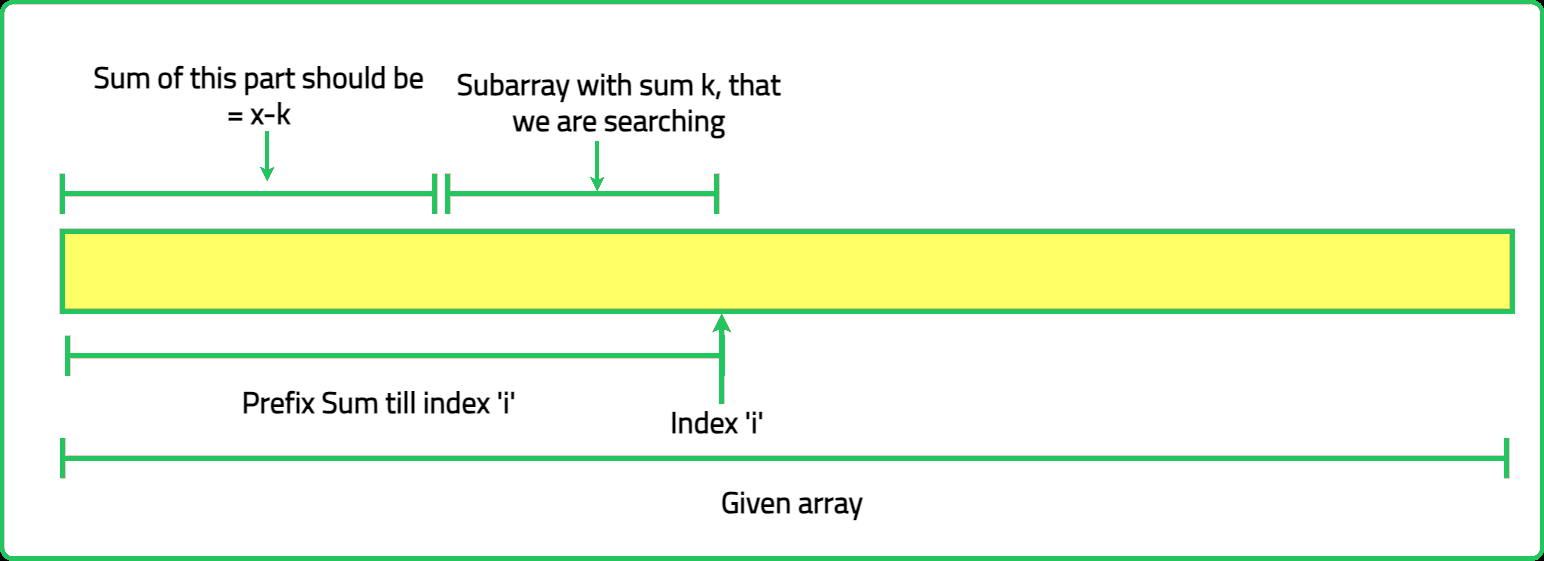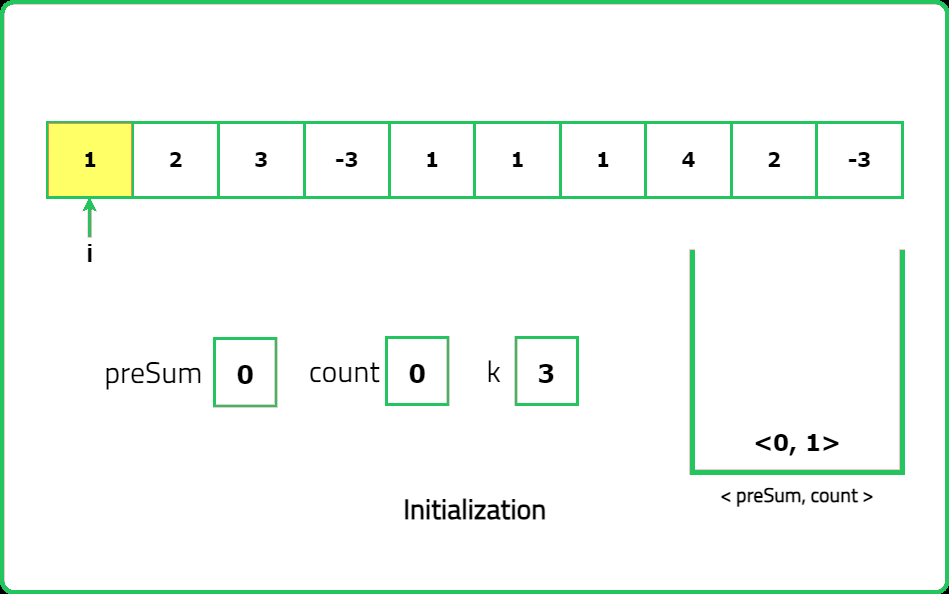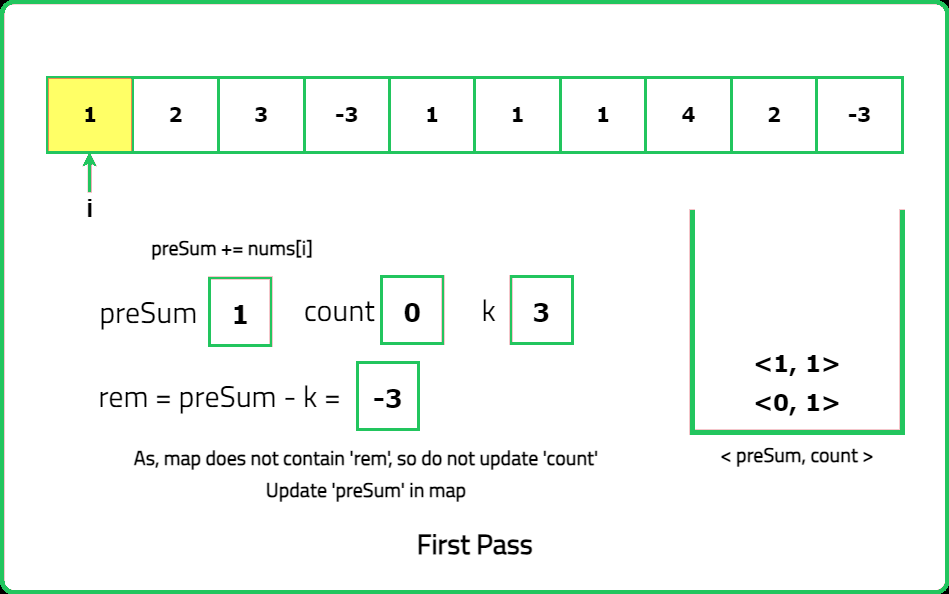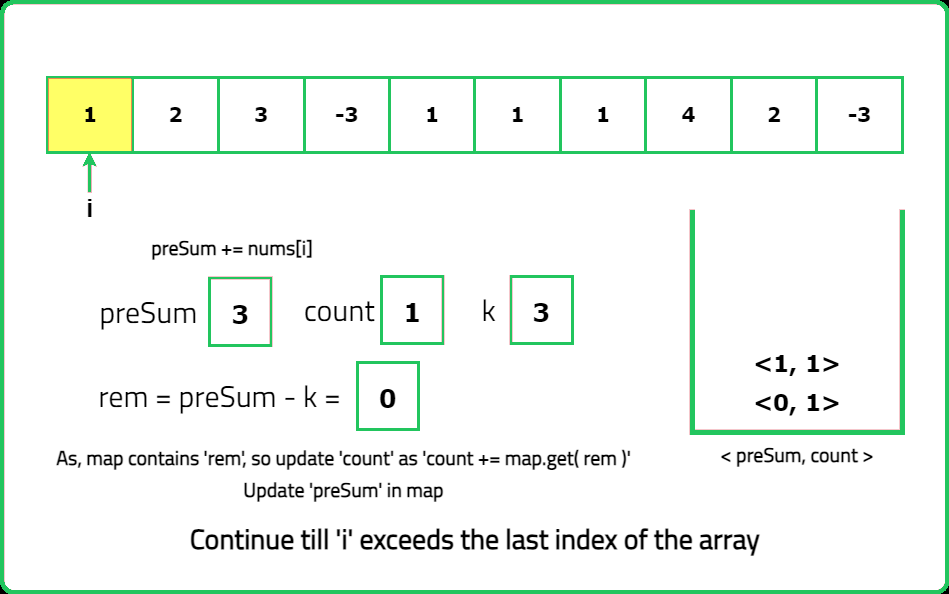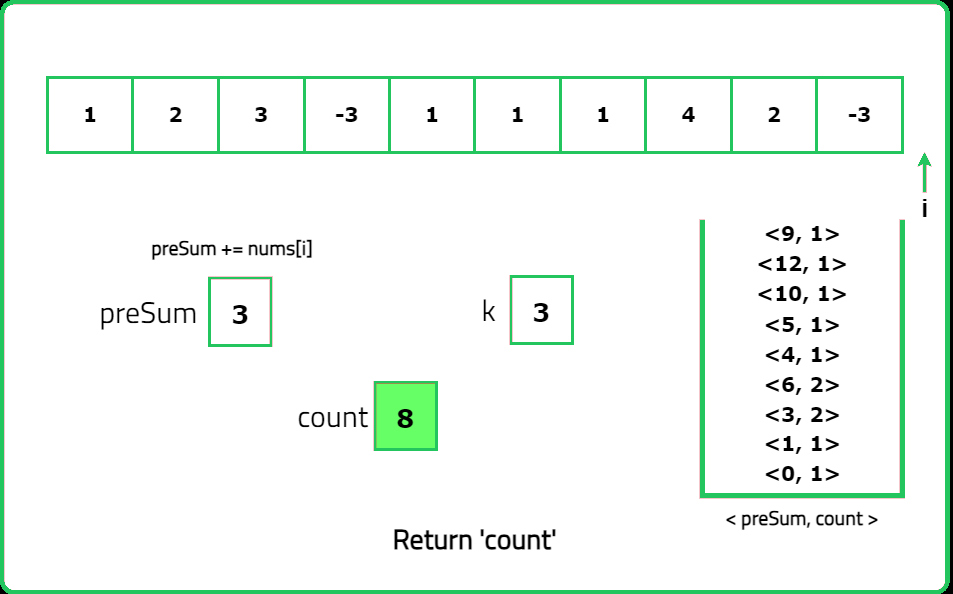Count subarrays with given sum
Hashing
FAQs
Hard
Given an array of integers nums and an integer k, return the total number of subarrays whose sum equals to k.
Examples:
Input: nums = [1, 1, 1], k = 2
Output: 2
Explanation: In the given array [1, 1, 1], there are two subarrays that sum up to 2: [1, 1] and [1, 1]. Hence, the output is 2.
Input: nums = [1, 2, 3], k = 3
Output: 2
Explanation: In the given array [1, 2, 3], there are two subarrays that sum up to 3: [1, 2] and [3]. Hence, the output is 2.
Input: nums = [3, 1, 2, 4], k = 6
Constraints
- 1 <= nums.length <= 105
- -1000 <= nums[i] <= 1000
- -107 <= k <= 107
Hints
- Use a hash map to store the frequency of prefix sums encountered so far. This allows efficient calculation of the number of subarrays that sum to k.
- For each index i, calculate the prefix sum up to that point. If prefixSum−k exists in the hash map, it indicates that there are subarrays ending at index i with a sum equal to k.
Company Tags
KPMG
Morgan Stanley
Rakuten
Freshworks
Byju's
HashiCorp
Cerner
Zynga
Flipkart
ARM
DoorDash
Roblox
Databricks
Uber
IBM
Instacart
Johnson & Johnson
Wayfair
Teladoc Health
Rockstar Games
Swiggy
Roche
Bungie
Medtronic
Broadcom
Google
Microsoft
Amazon
Meta
Apple
Netflix
Adobe
